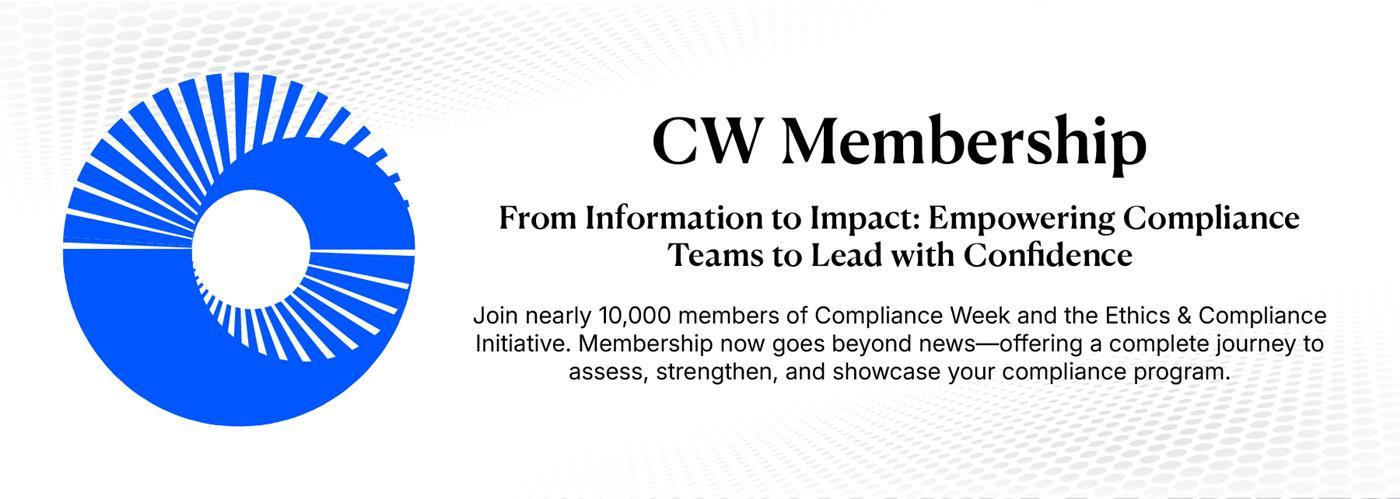- Home
-
News
- Back to parent navigation item
- News
- National Compliance Officer Day 2025
- Accounting & Auditing
- AI
- AML
- Anti-Bribery
- Best Practices
- Boards & Shareholders
- Cryptocurrency and Digital Assets
- Culture
- ESG/Social Responsibility
- Ethics & Culture
- Europe
- Financial Services
- Internal Controls
- Regulatory Enforcement
- Regulatory Policy
- Risk Management
- Sanctions
- Surveys & Benchmarking
- Supply Chain
- Third Party Risk
- Whistleblowers
- Opinion
- Benchmarking
- Certification
- Events
- Research
- Awards
-
CW Connect
- Back to parent navigation item
- CW Connect
- Sign In
- Apply
- Membership
Ask a CCO: How to meet data analytics expectations of both board and regulators
By Compliance Week2020-12-14T16:49:00

Six senior compliance practitioners share some big-picture thoughts on how their companies are using data within the context of regulators’ increased expectations in the area.
THIS IS MEMBERS-ONLY CONTENT
You are not logged in and do not have access to members-only content.
If you are already a registered user or a member, SIGN IN now.
Related articles
-
 Premium
PremiumHow will Biden administration impact compliance
2020-12-09T14:38:00Z By Compliance Week
Six senior compliance practitioners reflect on how they anticipate the Joe Biden presidency, and the expected regulatory changes coming with it, will impact the compliance function.
-
 Premium
PremiumAsk a CCO: Compliance leaders share pandemic lessons learned
2020-12-08T13:45:00Z By Compliance Week
Six senior compliance practitioners divulge how they fared in 2020, from wrestling with new risks amid the pandemic to the most valuable lessons learned during a year rife with crisis.
-
 Opinion
OpinionWhat the Copilot Usage Report 2025 Means for Corporate Compliance
2025-12-18T18:48:00Z By Tom Fox
Microsoft’s Copilot Usage Report 2025 offers compliance professionals a rare, data-driven look at how artificial intelligence is actually being used by millions of people, rather than how organizations assume it is being used.
More from Opinion
-
 Opinion
OpinionEmerging antitrust risks in the expanded use of AI
2025-12-16T19:24:00Z By Lee F. Berger and Robert Klotz, CW guest columnists
Concerns over competitors using AI pricing tools to fix prices have dominated antitrust discussions in the U.S. and EU. Recent cases show how algorithmic pricing might enable unlawful coordination.
-
 Opinion
OpinionHow to make the business case to upgrade records management systems
2025-12-10T15:29:00Z By Mark Diamond, CW guest columnist
Companies are giving their records management programs a makeover, and not for the reasons you may think. What used to be a sleepy back-office legal department function is now front and center, often driven by compliance teams. Organizations are discovering that a “save everything, forever” de facto policy doesn’t ...
-
 Opinion
OpinionWhy the EU’s new Machinery Regulation is a wake-up call on cybersecurity
2025-12-05T21:00:00Z By Pekka Alasaari and Johanna Schüßler, CW guest columnists
The European manufacturing industry is on the cusp of a regulatory shift that promises to reshape how machines are designed and operated.
- Terms and Conditions
- Privacy Policy
- Do Not Sell My Info
- © 2025 Compliance Week
Site powered by Webvision Cloud






